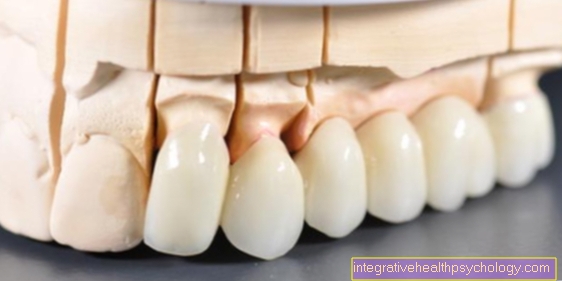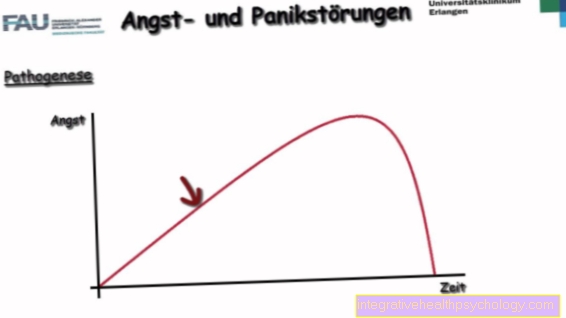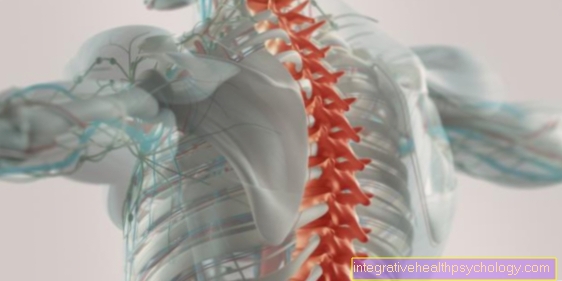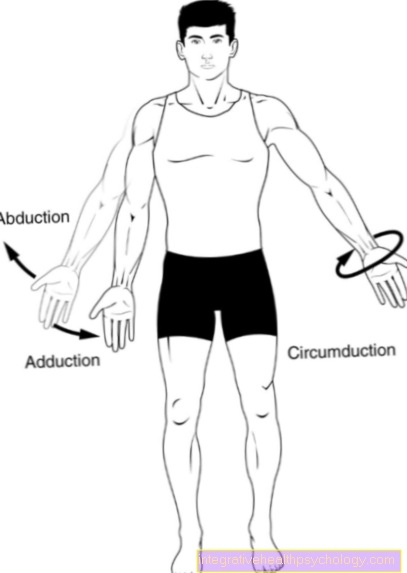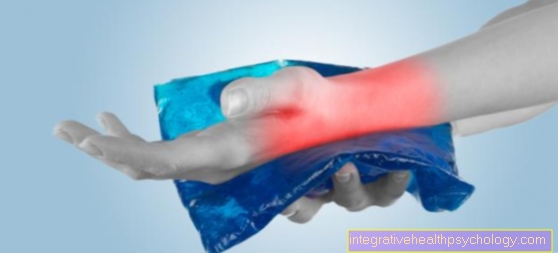Rhabdomyolysis
definition
Rhabdomyolysis is a disease in which muscles break down. However, this only affects the so-called striated muscles, i.e. our skeletal muscles.
The breakdown of the striated muscles leads to the release of the individual muscle components. Therefore rhabdomyolysis leads to an increase in metabolic products, enzymes and proteins in the muscles in the blood. Rhabdomyolysis can affect individual muscles and muscle groups or the entire body.

Statins as the cause
Statins are drugs that are designed to lower cholesterol levels. Rhabdomyolysis is triggered by the active ingredient in a small percentage of people who take this group of drugs. This applies in particular to people who already have many other risk factors for muscle breakdown: These include, for example, regular vigorous physical exertion, old age, female gender, the presence of many other diseases.
It is difficult to predict exactly who will get rhabdomyolysis from statins. However, since the complications of rhabdomyolysis can be life-threatening, the statins should be discontinued immediately and the muscle breakdown treated. In order to reduce the cardiovascular risk despite the discontinuation of this drug, a detailed consultation with a cardiologist (heart specialist) should take place.
Also read the article: Simvastatin.
The possible causes
When it comes to the causes of rhabdomyolysis, a distinction must be made between traumatic and atraumatic reasons. Trauma, such as a bruise, an electrical accident or overuse of the muscles due to exercise, can cause rhabdomyolysis in individual muscle groups. Even if the affected part of the body is tied off in the event of heavy bleeding, the muscles can then break down.
The atraumatic causes include above all poisoning and overdosing with medication, drugs, animal and plant poisons, etc. This leads to an imbalance in the electrolytes (blood salts) or a disruption of the metabolism of the muscles. This can trigger rhabdomyolysis throughout the body. Infections or metabolic diseases can also lead to rhabdomyolysis.
Sport as the cause
Rhabdomyolysis can basically be caused by excessive exertion in sport. The muscles are particularly stressed through strength training or Crossfit. If this results in a significant imbalance in the metabolism and the supply of electrolytes to the muscles, they can be damaged in the long term. Often only individual muscle groups are affected, namely those that have been overused during sport.
In particular, competitive athletes who regularly drive their muscles to peak performance can occasionally have blood levels that correspond to rhabdomyolysis. This can be explained by the heavy strain on the muscles. However, intensive training does not necessarily lead to the actual breakdown of the muscles.
Symptoms of rhabdomyolysis
Rhabdomyolysis is characterized by a multitude of symptoms, which can be very different depending on the cause of the disease. As a rule, rhabdomyolysis is initially accompanied by muscle pain. In the event of severe muscle breakdown, muscle weakness initially occurs, later a complete loss of strength in the affected muscle group can occur.
If the cause of the rhabdomyolysis is a traumatic event, accompanying injuries are usually also present. Unaffected muscle groups can also have suffered a bruise or a ruptured muscle fiber. Injuries to other structures such as bones, ligaments, joints, etc. are also possible.
In the case of an atraumatic cause such as poisoning, symptoms such as electrolyte disturbances, fever, nausea, vomiting, clouded consciousness up to intoxication or unconsciousness occur. Due to the high content of muscle proteins (myoglobin) in the urine, a temporary red coloration of the urine can occur, this symptom is called myoglobinuria. If kidney damage occurs as a result, excessive or decreased urination can be additional symptoms.
Find out all about the topic here: Muscle aches.
The diagnosis
The diagnosis of rhabdomyolysis is first made clinically. In this way, the doctor responsible can find out about the person's complaints in a conversation. The most noticeable are muscle pain, decreased strength and possibly the red color of the urine.
In addition, the examination of the blood and urine is groundbreaking, as the individual muscle components are washed into the blood by the disintegration of the muscles. From there they have to be excreted in the urine. In the case of acute kidney failure, water retention can also be observed in the physical examination.
The laboratory values for diagnosis
In rhabdomyolysis, various substances are examined in a laboratory analysis. As the muscles break down, the individual muscle components get into the blood. This is why the levels of muscle enzymes, myoglobin (muscle protein) and electrolytes are checked in the blood. The LDH is also checked, as it is an important indicator of cell breakdown.
These substances are then filtered from the blood and excreted in the urine, so these values can also be detected in the urine. In particular, the presence of myoglobin in the urine is a strong indicator of rhabdomyolysis. In order to detect kidney damage in good time, the laboratory values for the kidney are also measured from the blood and urine.
Find out all about the topics here:
- the blood count
- the urine test
The treatment
The therapy of rhabdomyolysis can often not take place causally. A muscle injury caused by trauma cannot be reversed. However, triggering drugs and toxins can be discontinued or flushed out of the body.
If treatment of the cause is possible, it should be treated as soon as possible. Otherwise, therapy focuses on the symptoms of rhabdomyolysis. The main thing is to support the kidneys in their function. Since a lot of waste products have to be excreted via the kidneys, the administration of large amounts of fluids (over 5 liters) is recommended, and drugs (so-called diuretics) should also be taken, which force the kidneys to excrete a large amount.
In order to control the excretion of fluids, a fluid balance is usually necessary. For this purpose, all the absorbed and excreted amounts of fluid are added together. Daily weighing can also quickly detect excessive or insufficient fluid excretion.
In the case of acute kidney failure, the kidneys are usually not able to filter and excrete sufficient fluid, so that the excretion of muscle components is not guaranteed. Dialysis (blood washing using a machine) may therefore be necessary in the event of acute kidney failure.
Find out more about the topic here: acute kidney failure.
The complications
The most feared consequences of rhabdomyolysis are acute kidney damage and intravascular (within the blood vessels) blood clotting, as these can quickly become life-threatening. A derailment of the electrolytes (blood salts) is possible, this can lead to metabolic disorders as well as disorders of the muscle function and thus also the heart muscles.
Another complication is the compartment syndrome, in which there is a strong swelling of the muscles due to fluid retention. If the muscle doesn't have enough room to expand, it can perish.
Read more about the topic here: Compartment syndrome.
Kidney failure as a complication
In rhabdomyolysis, kidney failure is due to excessive stress on the kidneys. When the muscles break down, many substances that are toxic to the body are released from the cells and get into the blood. The kidney has to filter and remove all of these toxins from the blood. Due to the high amount, the kidney can fail quickly.
Myoglobin in particular, an important component of the muscles, can also clog the kidney's filter system and thus additionally damage the kidney. Acute kidney failure can be life-threatening.
You can find more information on this topic here: acute kidney failure.
The duration
The duration of rhabdomyolysis depends heavily on the cause. In trauma, the muscle breakdown usually lasts a few days to weeks. In chronic diseases, such as metabolic diseases, rhabdomyolysis can also occur over a long period of time. How long the consequences can be felt depends heavily on how timely and intensively they were treated.
Prognosis
The prognosis for rhabdomyolysis is better the sooner the disease is recognized and treated. Rhabdomyolysis usually heals without any complications.
In the case of kidney failure or severe blood clotting disorders, hospital stays lasting for months and lifelong damage or even death after a few days can occur. Such complications can occur in up to 15% of affected people.




